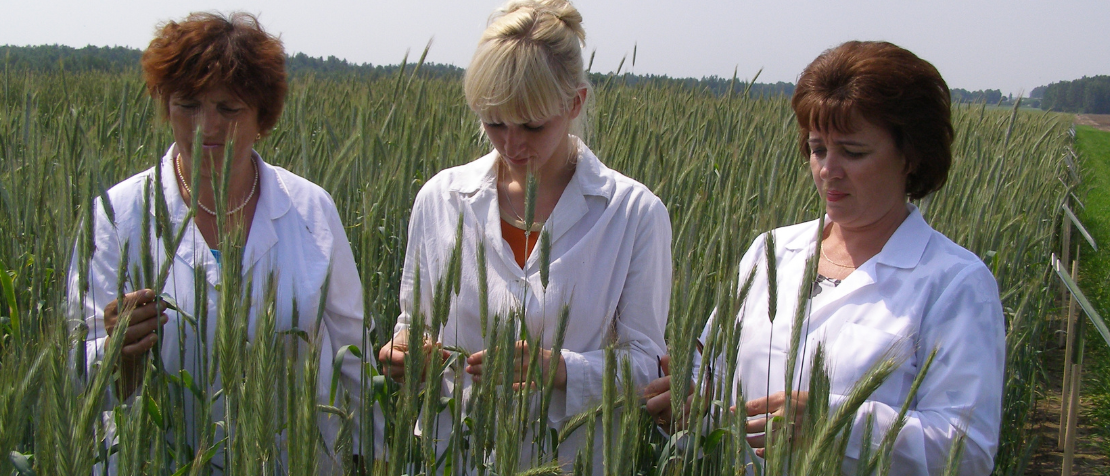Bridging the gender divide in rural Belarus to unlock agrifood potential

©Ministry of Agriculture and Food of Belarus / Mass Media Office
Rural women in Belarus play essential roles across agrifood systems, from farming and food production to entrepreneurship and market sales. However, as in many parts of the world, their contributions often remain largely invisible and under-recognized, and gender disparities in agriculture and rural development persist. This issue is highlighted in the National gender profile of agriculture and rural livelihoods: Republic of Belarus, developed with the support of the Food and Agriculture Organization of the United Nations (FAO). The report draws on statistical data and qualitative insights gathered from interviews with rural women and other local stakeholders.
This report is the first country level analysis of Belarus supported by FAO under its global Country Gender Assessment (CGA) series. It provides a comprehensive examination of the roles of rural women and men in agriculture, their access to resources, services and decision-making, and broader labour market and poverty trends. Despite Belarus’ strong legal framework for gender equality and commitments to the Committee on the Elimination of Discrimination against Women, the Beijing Platform for Action and the 2030 Agenda, agriculture is still generally treated as a “gender neutral” sector. While measures have been articulated for achieving gender equality at the national and regional levels, gender-related targets and goals specific to the agricultural sector are lacking.
The situation is further complicated by the lack of situational analysis and sex-disaggregated data specific to agriculture. This makes it difficult to fully understand who owns or manages farms, what types of production women and men engage in, or whether they benefit equally from state support. Without reliable data, policies cannot effectively target the needs of different population groups or close gender gaps in rural areas.
Belarus has achieved low overall poverty rates, yet spatial and gender disparities persist. Women in rural areas are more exposed to material deprivation and bear a disproportionate burden of unpaid domestic and care work. This includes food preparation, childcare, and cleaning, in addition to key farming activities such as planting, weeding, and marketing. Many rural women interviewed as part of the study said they carry out the daily work of running farms but still describe their role as supportive or secondary to male relatives, reflecting deeply ingrained social norms that limit women’s recognition and decision-making power. This dual burden of unpaid care responsibilities and farm labor restricts their economic opportunities and perpetuates inequalities in access to resources, income, and social protection.
While modernization in agriculture has reduced some employment gaps, men continue to dominate formal jobs in the sector. Women are more often engaged in accounting or administrative tasks, while men operate machinery. Gender stereotypes remain a barrier to women's participation in leadership and decision-making. Few gender-sensitive value chain analyses exist, and the limited data available tend to overlook the role of contributions by family workers, the majority of whom are women.
The report also highlights rural women’s unequal access to land, inputs, and advisory services. Although official data suggest that women and men have similar tenure rights, there is a lack of information on land size, use, and control. Women farmers face challenges in accessing loans for equipment and say their small harvests often do not justify the use of machinery. There are minimal gaps in access to fertilizers and basic tools, but advisory services frequently remain out of reach for women due to time constraints, limited availability in rural areas, and lack of tailored content.
Despite growing entrepreneurship among women in Belarus, fewer rural women own or operate businesses compared to men. Those who do often lack business planning support, training opportunities and access to markets. Women expressed interest in agroecotourism, handicrafts, and value-added processing, but existing finance and support schemes are not tailored to their needs. There is also limited data on how women benefit from state subsidies or concessional loans in agriculture.
The assessment report confirms that women and men contribute in different but complementary ways to Belarus’s agrifood systems and highlights key opportunities to address existing inequalities. Tackling these disparities will not only promote gender equality but also drive overall growth and enhance productivity in the agricultural sector.
FAO’s National gender profile of agriculture and rural livelihoods provides a strong foundation for closing gender gaps in the agrifood sector. It calls for targeted, gender-sensitive policies informed by improved sex-disaggregated data, which would enable better access to services and financing, and greater recognition of rural women as farmers, entrepreneurs, and decision-makers. By investing in inclusive approaches, Belarus can strengthen its agrifood systems and ensure that all rural communities benefit from sustainable development.
Currently available in English, the report will soon be published also in Russian.
